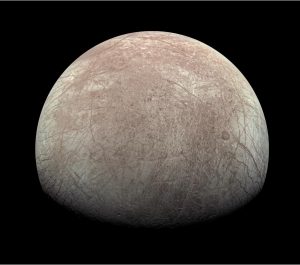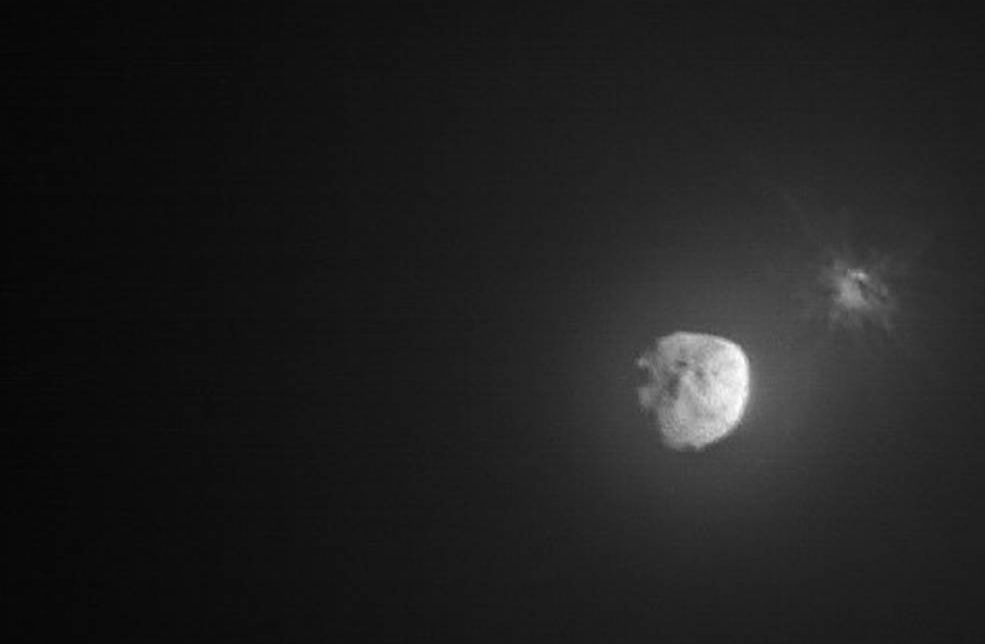
Global Space News: following the DART mission to protect our planet
17 days to impact
In early September of 2022, Scientists around the world were anxiously pondering one important question: if it became necessary… if the future of life on our planet was at stake… could we save the Earth? It was time to find out.
We are about to see a ground-breaking experiment for Planetary Defence (activities related to potential celestial impacts on Earth). NASA’s DART probe will collide with asteroid Didymos’s moon, Dimorphos, to determine how much the orbit of the moon is altered in such an impact. If we discover a celestial body that is likely to collide with the Earth, we would like to change its orbit to avoid this collision, and we hope this experiment will provide basic data for this purpose.
Yoshikawa Makoto, Hayabusa2 Mission Manager (former)
The building suspense was for the intense finale of the NASA Double Asteroid Redirection Test (DART) that was due to collide with the smaller of two asteroids forming a binary asteroid system. If the orbit of asteroid Dimorphos around asteroid Didymos changed as a result of the spacecraft’s impact, it would be evidence that a future asteroid could be diverted away from the Earth with a similar technique.
Regardless of outcome, DART will be followed by the ESA-led Hera mission that will carry a thermal imager developed by JAXA. Hera is scheduled to launch in fiscal year 2024 and will return to the asteroid duo and analyse the result of the impact.
The two spacecraft are the world’s first dedicated planetary defence missions, tackled by the international force of multiple space agencies. As tension continued to mount for the DART impact, the JAXA Space Education Center brought the planetary defence leaders together for a public webinar.
Planetary defence is a great example of international collaborations where scientists and engineers tackle the global issue together. JAXA academy is all about encouraging people (mostly students) to look at global issues like this and climate change — we try to give them the topics that concern us all.
Kate Kitagawa, Director of the JAXA Space Education Center
→ Click to read Kate’s full story
Hundreds of people tuned in to hear researchers from Japan, Europe and the USA discuss missions and initiatives from around the world to help protect the Earth from a potentially devastating celestial impact. Which approach was more important? Identifying hazardous asteroids (the task for NASA proposed mission, NEO Surveyor), learn more about the properties of those asteroids statistically likely to collide (the Hayabusa2♯ extended mission) or practice moving these space rocks out of the Earth’s path (DART and Hera)? The answer of course, was that all are essential and the mammoth undertaking underscores the importance of an international effort.
14 days to impact
Three days after the planetary defence webinar, a tiny probe roughly the size of a shoebox detached from the DART spacecraft. Built by the Italian Space Agency (ASI), the Light Italian CubeSat for Imaging of Asteroids (LICIACube) was set to follow DART on the final stage of its journey, and capture images as the larger spacecraft slammed into the asteroid.

As missions such as Hayabusa2 to asteroid Ryugu have revealed, asteroids are not hard objects. They appear to be typically loose collections of rubble. Such structures will distort and shed material during an impact, making the resulting change in motion far harder to predict. The details at this moment of collision were therefore eagerly anticipated but could not be recorded by the DART spacecraft, which would be destroyed in the impact. The solution was the tiny LICIACube.
To the Italian development team, congratulations on the release of LICIACube and receiving of its first voice! We live in a world where more and more micro-spacecraft and CubeSats are being used for deep space exploration. In the upcoming launch of Artemis 1, many CubeSats will also be demonstrated, which is really something to look forward to!
Ozaki Naoya, Department of Spacecraft Engineering
Using a separate camera to record an impact was also employed by the Hayabusa2 mission during the creation of an artificial crater on asteroid Ryugu. In this case, a small carry-on impactor (SCI) was used in the collision, and the main spacecraft moved behind the asteroid to avoid being damaged by the ejected debris. A deployable camera was therefore released to monitor the impact itself. Small probes are now becoming a powerful asset in space exploration to gather scientific data, especially in situations where a larger spacecraft would be too expensive to risk.
0 days to impact
Sitting in the mission control room, Dr Patrick Michel, Hera Mission Principal Investigator and Director of Research at the French National Centre for Scientific Research (CNRS), reflected that the impact of the DART spacecraft with asteroid Dimorphos was the culmination of 20 years of effort by scientists in both Europe and the USA. Yet despite the years of planning and preparation, the team had very little idea about what to expect.
It’s the first time, I think, that both the experts and the public had the same initial level of ignorance. Except for its size, we had no other information about Dimorphos. Would it be spherical or very elongated, would its surface be bare rock or full of boulders? This is what we waited for so long to discover.
Patrick Michel, Hera Mission Principal Investigator

It was only in the final minutes before impact that shape and surfaces of first Didymos and then the smaller Dimorphos came into focus on the DART cameras. It was a deeply emotional moment, Michel recounts.
We had to wait the last minutes before impact to see something. Then, its ellipsoidal shape became visible, and then rapidly, its surface full of boulders and then the impact. It was crazy, it was like discovering a new world we never saw before. I screamed like I never had, because this is the moment that was a dream 20 years ago, turned into a reality. At the end of it, a few of us just cried.
→ Click to read Patrick’s full story
On September 26 at 08:14 JST, the DART spacecraft slammed into Dimorphos at about 6.6 kilometers per second. The last image returned from the spacecraft showed a rocky landscape of boulders and rocks before the screen went red. The rapid speed of the spacecraft meant that this final approach had to be entirely automated, including identifying Dimorphos separately from Didymos as the asteroid pair finally become close enough to be resolved. This amazing engineering produced as much excitement as the deflection itself.
DART’s collision experiment was really “impactful” for me! In a critical event where a single moment can decide success or failure, I can only tip my hat to the technology that allows the autonomous operation of a spacecraft to be entirely trusted with the navigation guidance control to collide with a uncooperative object in deep space at speeds of km/s.
Mimasu Yuya, Hayabusa2 Navigation Guidance and Control Officer
Hayabusa2♯ also has a one-chance event coming up in 2026: an asteroid fly-by. Although the spacecraft will not directly collide with the asteroid, we pass by at speeds of km/s. In order to capture images of the asteroid, we must enhance the autonomous capability of the spacecraft and we are determined to make this a success.
The days after impact
A few minutes after DART struck Dimorphos, LICIACube flew by the asteroid to capture stunning images of the ejecta plumes emanating from the asteroid at the collision point. It was an immediate second success for the mission, and spoke to the power of CubeSats.
Congratulazioni al team di LICIACube! I am very impressed with the images taken by the LICIACube team. DCAM (Deployable Camera) on Hayabusa2 also did good work during the Hayabusa2 SCI experiment. Such a high-risk mission is a good example for the use of a micro spacecraft/probe. I look forward to future reports from LICIACube!
Ozaki Naoya, Department of Spacecraft Engineering

In addition to these on-site images, the James Webb Space Telescope and Hubble Space Telescope were both able to image the collision ejecta in another historical first. Ground-based telescopes were also ready, returning staggering images of the debris trail that stretched across the sky for more than 10,000 kilometres, pushed by the Sun’s radiation pressure in a similar manner to a comet’s tail. These results spoke to the success of the DART mission, and also provided a tantalising hint of what we might learn.
I am anticipating that the observations with LICIACube and the ground and space telescopes will reveal the distribution of particle sizes that were ejected from the impact of the DART spacecraft with asteroid 65803 Didymos’s moon, Dimorphos. From this, we can then infer the size distribution of the sand and rocks that comprise Dimorphos itself. In particular, the images from LICIACube reminded me of experiments conducted for the purpose of comparing with the Hayabusa2 small carry-on impactor (SCI) experiment on asteroid 162173 Ryugu at the Hypervelocity Impact Facility I manage and operate.
Hasegawa Sunao, Department of Solar System Science
And then there is the unprecedented opportunity to return to the asteroid with the Hera Mission for a close look at the impact site. The scale of damage on the surface of Dimorphos caused by the DART spacecraft will provide information on the strength of the asteroid, improving calculations of the requirements needed to redirect a hazardous celestial body.
The DART impact to asteroid Dimorphos was a great success, just like the perfect hit of a dart! An enormous ejecta cloud was observed by the LICIACube and from ATLAS (Asteroid Terrestrial-impact Last Alert System).
Okada Tatsuaki, Department of Solar System Science
A notable point in planetary science was whether Dimorphos, a 100m diameter class small asteroid, is a monolithic body or a rubble-pile like asteroid Itokawa and Ryugu (and Bennu). The up-close images by DART just before impact indicate a loosely bound, cohesionless rubble-pile body. Considering the over 10m diameter of the artificial crater on Ryugu formed by Hayabusa2 SCI impact (using a mass of 2kg and velocity of 2km/s), a catastrophic event possibly occurred with the impact of DART (500kg and 6 km/s). This question will be answered by Hera after its arrival at the binary asteroid, so please stay tuned!
Hope for the future
On the 12th October 2022 JST, NASA announced that the orbit of asteroid Dimorphos around Didymos had changed after the impact with the DART spacecraft. In order for the change to be detectable by telescopes on Earth, the DART mission team needed to alter the 12 hour orbit of Dimorphos by at least 73 seconds. This target was smashed when Dimorphos’s orbit was confirmed to have been shortened by 32 minutes.
The DART mission has reported that the orbital period of Dimorphos, the asteroid with which the DART spacecraft collided, changed by more than 30 minutes. Judging from the images captured just before the impact, there was no doubt that DART hit the asteroid as planned, but the chance in the orbital period is again more proof that the experiment was a success. It is no exaggeration to say that this achievement marks a new page in history, especially in the field of planetary defence. As someone who aspires to follow this path, I would like to send my heartfelt congratulations to all those involved in bringing about this great achievement.
Mimasu Yuya, Hayabusa2 Navigation Guidance and Control Officer
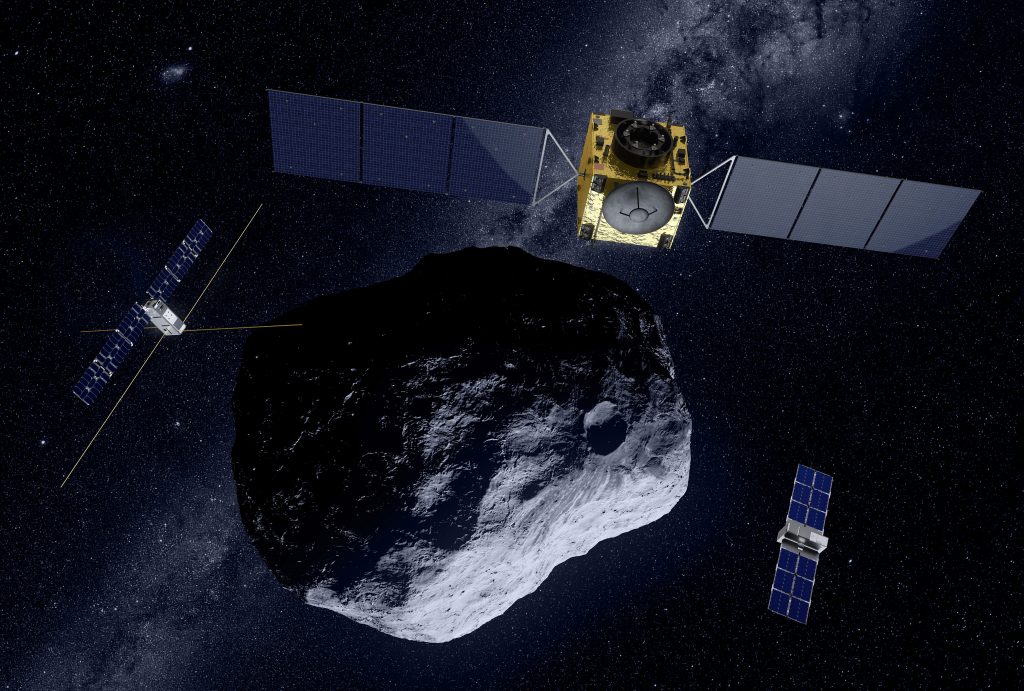
It was an incredible change in the asteroid’s orbit, but perhaps less surprising given the large quantity of debris that was observed directly after the collision. Alternatively, the large change might be due to the properties of the asteroid differing from expectations.
The impact of the DART spacecraft appears to have caused a significant change to the orbital period of Dimorphos! This may be because the amount of ejected material exceeded expectations (so much material was thrown out that a comet-like dust tail was formed), or that the total mass (or density) of Dimorphos is perhaps smaller than predicted due to the rubble pile structure with many gaps that was revealed in the close-up images just before the collision. This will be revealed by the Hera spacecraft, which will later visit the site.
Okada Tatsuaki, Department of Solar System Science
As we continue to explore the results of the DART mission and learn more about both deflecting asteroid orbits and the asteroids themselves, the results of this experiment suggest that humanity does have the potential to save itself.
The DART experiment suggests we can change the velocity of an asteroid. Therefore, if we have enough warning, we should be able to avoid an Earth collision by deflecting an on-coming asteroid. As we get more precise data from observations of Dimorphos, and later the Hera mission, we will be able to better estimate what would be needed for planetary defence.
Yoshikawa Makoto, Hayabusa2 Mission Manager (former)
“Global space news” is a chance for us to highlight important developments across the world and share our excitement of these achievements.
Further Information:
DART Mission website (external site)
Hera Mission website (external site)
JAXA Academy
Hayabusa2 Mission website



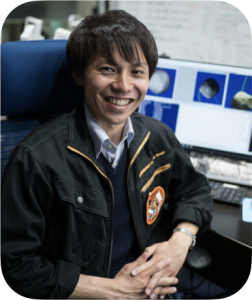

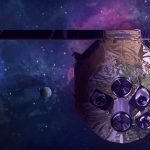 Previous Post
Previous Post Next Post
Next Post


